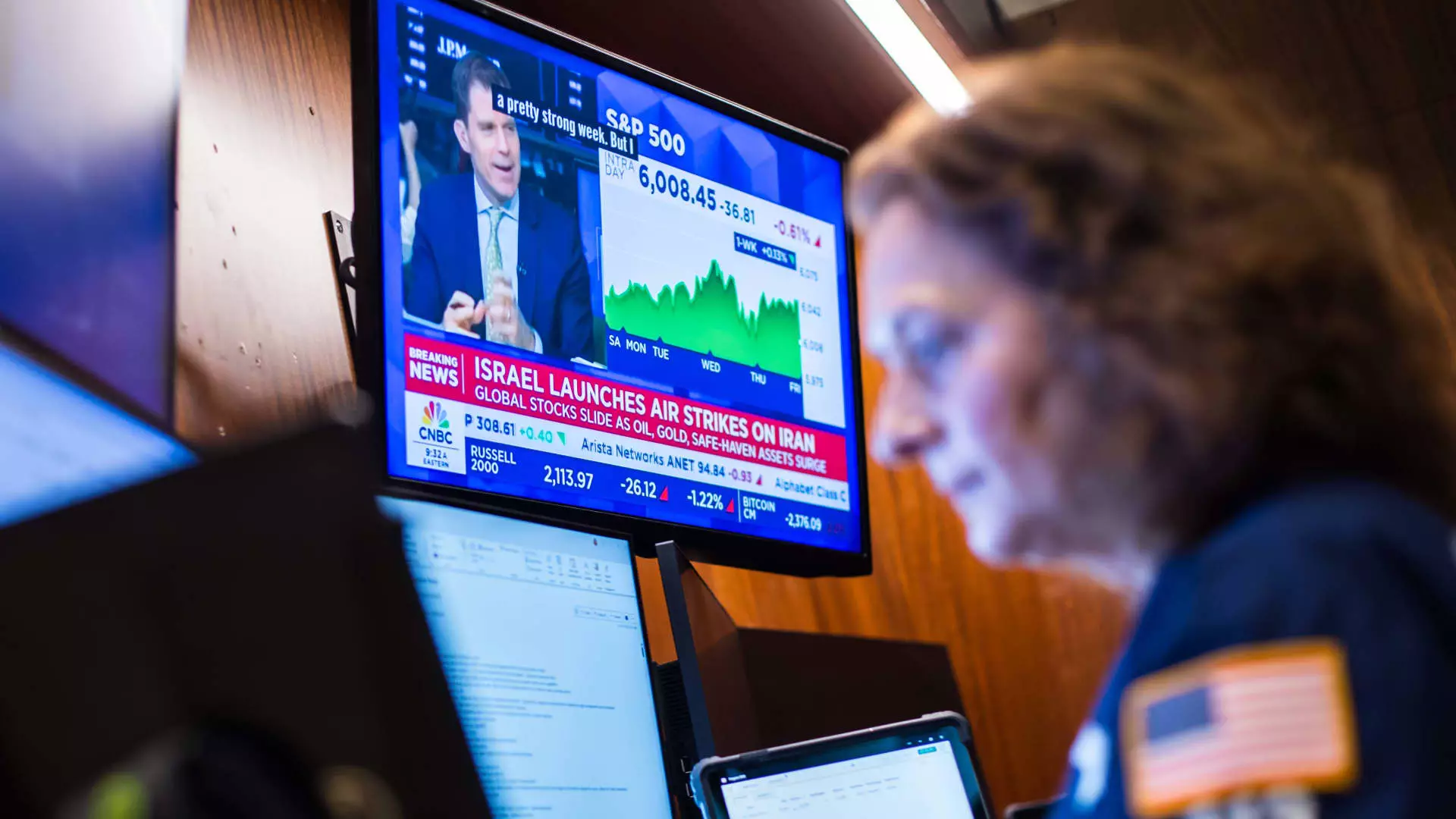The financial landscape often mirrors the chaos of geopolitical events, creating a volatile environment that traders and investors must navigate with caution. The recent Israeli airstrike on Iranian nuclear infrastructure serves as a poignant example of how quickly things can spiral out of control. What was shaping up to be a week of relative calm in U.S. financial markets turned into a nightmare as stocks plummeted in response to heightened tensions. The S&P 500 and Nasdaq Composite experienced declines of 1.13% and 1.3%, respectively, on that grim Friday.
Investors are left in a precarious place, suddenly retreating to traditional safe havens like gold and crude oil. With Brent and West Texas Intermediate crude futures soaring by approximately 7%, it underscores an immediate fear for the stability of global supply chains. What is disheartening is that, prior to this escalation, the markets had been on an upward trajectory. The sudden turn of events not only halted this positive momentum but also snapped consecutive weeks of gains, illustrating how fragile investor confidence can be in the face of rising geopolitical tensions.
Indeed, in such an ominous climate, where the specter of war looms large, financial market fluctuations are to be expected. Yet, it’s difficult not to feel frustrated by how quickly a single event can unseat long-term trends. Moreover, the inconsistent recovery post-pandemic contradicts expectations, leaving many to wonder whether a real recovery is ever truly attainable. The geopolitical instability creates a rich ground for speculation, yet it remains disquieting for those who seek a stable economic environment.
Economic Data: A Double-Edged Sword
Amidst this storm, the economic data released over the week depicted an increasingly complex picture. On the surface, encouraging signs emerged: a lower-than-expected rise in the consumer price index anticipated easing inflation, and the producer price index also showed signs of retreat. However, this positive data is paired with a disconcerting undercurrent—softening labor markets characterized by stagnant weekly jobless claims and persistently high continuing claims.
Navigating through these mixed signals becomes challenging as investors strive to make sense of what they’re seeing. While easing inflation ideally should empower consumer confidence and spending, the persistence of unemployment metrics casts a long shadow over these optimistic readings. If consumers are pinching pennies due to fears of job stability, the broader economic outlook may begin to dim. This paradox demonstrates an inconvenient truth: superficially reassuring economic indicators cannot replace genuine job security for a populace still recovering from the aftermath of the pandemic-induced economic crisis.
The promise of better consumer buying power almost feels overshadowed by volatility, leaving investors questioning the sustainability of this “good news.” As they wade through this misinformation and uncertainty, it’s increasingly clear that robust dialogue around economic policies should be prioritized amongst our leaders to adequately address and fortify an uncertain economy.
Artificial Intelligence: The Next Frontier or Just Hype?
Artificial intelligence (AI) emerged as another focal point during the week, with various tech giants making headlines. Apple’s annual Worldwide Developers Conference left much to be desired in terms of AI announcements, leading to discontent among investors longing for innovative breakthroughs. Meanwhile, Meta Platforms stirred excitement with their ambitions in AI, having made a substantial investment in Scale AI to establish a “superintelligence” unit. The dichotomy in reactions to AI developments eloquently speaks to the unpredictability that defines this nascent sector.
On the other hand, the sheer scale of demand for AI computing cannot be ignored. Nvidia’s CEO voiced robust growth expectations, forecasting a ten-fold increase in Europe’s computing capacity in two years. This optimism rings hollow against the backdrop of delays and market expectations that are yet to be fully realized. It poses a pressing question: are we truly at the cusp of transformational change with AI, or are we mired in an era defined by overhyped promises that may never deliver?
Noteworthy developments from Oracle and AMD further complicate this narrative. Oracle’s unexpected stock rally and AMD’s announcement of new AI server chips signify that while the journey may be full of challenges and setbacks, room for innovation and advancement remains. Still, these fleeting achievements must strive to coexist with the giants of the industry like Nvidia if they are to create an equitable AI landscape.
While the strides in AI present exhilarating prospects, the persistent threats of geopolitical unrest and tricky economic indicators add enrichening layers of complexity. In a world demanding clear solutions, we find ourselves longing for stability amid chaos—a precarious tightrope that the markets must learn to navigate if they hope for a more harmonious future.

